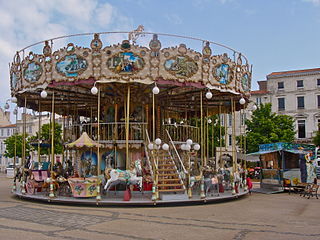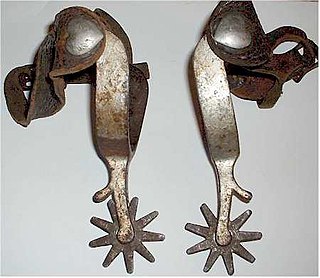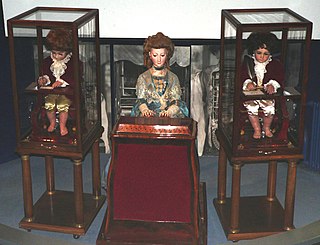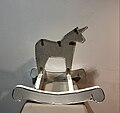
A hobby is considered to be a regular activity that is done for enjoyment, typically during one's leisure time. Hobbies include collecting themed items and objects, engaging in creative and artistic pursuits, playing sports, or pursuing other amusements. Participation in hobbies encourages acquiring substantial skills and knowledge in that area. A list of hobbies changes with renewed interests and developing fashions, making it diverse and lengthy. Hobbies tend to follow trends in society. For example, stamp collecting was popular during the nineteenth and twentieth centuries as postal systems were the main means of communication; as of 2023, video games became more popular following technological advances. The advancing production and technology of the nineteenth century provided workers with more leisure time to engage in hobbies. Because of this, the efforts of people investing in hobbies has increased with time.

The hobby of collecting includes seeking, locating, acquiring, organizing, cataloging, displaying, storing, and maintaining items that are of interest to an individual collector. Collections differ in a wide variety of respects, most obviously in the nature and scope of the objects contained, but also in purpose, presentation, and so forth. The range of possible subjects for a collection is practically unlimited, and collectors have realised a vast number of these possibilities in practice, although some are much more popular than others.

A carousel or carrousel, merry-go-round (international), roundabout, or hurdy-gurdy is a type of amusement ride consisting of a rotating circular platform with seats for riders. The "seats" are traditionally in the form of rows of wooden horses or other animals mounted on posts, many of which are moved up and down by gears to simulate galloping, to the accompaniment of looped circus music.

Erotic furniture, also known as sex furniture, is any form of furniture that is designed to act as an aid to sexual activity. This includes furniture and harnesses designed to aid positioning, assisting with comfort, penetration level and stimulation. Other types of erotic furniture are constructed to be an aid to erotic bondage. The functionality may be obvious or the erotic furniture may be designed to appear as conventional furniture. Some conventional items of furniture such as the four-poster bed and the chaise longue traditionally have erotic associations, but they are not considered to be erotic furniture as their primary use is not erotic. Erotic furniture can also be furniture decorated with erotic art.

A spur is a metal tool designed to be worn in pairs on the heels of riding boots for the purpose of directing a horse or other animal to move forward or laterally while riding. It is usually used to refine the riding aids (commands) and to back up the natural aids. The spur is used in many equestrian disciplines. Most equestrian organizations have rules covering spur design and use, as well as penalties for using spurs in any manner that constitutes animal abuse.

A dollhouse or doll's house is a toy house made in miniature. Since the early 20th century dollhouses have primarily been the domain of children, but their collection and crafting is also a hobby for many adults. English-speakers in North America commonly use the term dollhouse, but in the United Kingdom and other English-speaking countries the term is doll's house. They are often built to put dolls in.

Western saddles are used for western riding and are the saddles used on working horses on cattle ranches throughout the United States, particularly in the west. They are the "cowboy" saddles familiar to movie viewers, rodeo fans, and those who have gone on trail rides at guest ranches. This saddle was designed to provide security and comfort to the rider when spending long hours on a horse, traveling over rugged terrain.

The trot is a two-beat diagonal horse gait where the diagonal pairs of legs move forward at the same time with a moment of suspension between each beat. It has a wide variation in possible speeds, but averages about 13 kilometres per hour (8.1 mph). A very slow trot is sometimes referred to as a jog. An extremely fast trot has no special name, but in harness racing, the trot of a Standardbred is faster than the gallop of the average non-racehorse, and has been clocked at over 30 miles per hour (48 km/h).

Vehicles that have two wheels and require balancing by the rider date back to the early 19th century. The first means of transport making use of two wheels arranged consecutively, and thus the archetype of the bicycle, was the German draisine dating back to 1817. The term bicycle was coined in France in the 1860s, and the descriptive title "penny farthing", used to describe an "ordinary bicycle", is a 19th-century term.

A rocking chair or rocker is a type of chair with two curved bands attached to the bottom of the legs, connecting the legs on each side to each other. The rockers contact the floor at only two points, giving the occupant the ability to rock back and forth by shifting their weight or pushing lightly with their feet. Rocking chairs are most commonly made of wood. Some rocking chairs can fold.

Rockers, leather boys, Ton-up boys, and possibly café racers are members of a biker subculture that originated in the United Kingdom during the 1950s. It was mainly centred on British café racer motorcycles and rock 'n' roll music. By 1965, the term greaser had also been introduced to Great Britain and, since then, the terms greaser and rocker have become synonymous within the British Isles, although used differently in North America and elsewhere. Rockers were also derisively known as Coffee Bar Cowboys. Their Japanese counterpart was called the Kaminari-Zoku.

A whirligig is an object that spins or whirls, or has at least one part that spins or whirls. It can also be a pinwheel, spinning top, buzzer, comic weathervane, gee-haw, spinner, whirlygig, whirlijig, whirlyjig, whirlybird, or simply a whirly. They are most commonly powered by the wind but can be hand-, friction- or motor-powered. They can be used as kinetic garden ornaments, and can be designed to transmit sound and vibration into the ground to repel burrowing rodents.

The Jaquet-Droz automata, among all the numerous automata built by the Jaquet-Droz family, refer to three doll automata built between 1768 and 1774 by Pierre Jaquet-Droz, his son Henri-Louis, and Jean-Frédéric Leschot: the musician, the draughtsman and the writer. The dolls are still functional, and can be seen at the Musée d'Art et d'Histoire of Neuchâtel, in Switzerland. They are considered to be among the remote ancestors of modern computers. There was also a fourth automaton, called "the Cave", which was a big diorama with a palace carved on a rock, gardens and figurines, which has disappeared.

The BSA Gold Star is a motorcycle made by BSA from 1938 to 1963. They were 350 cc and 500 cc single-cylinder four-stroke production motorcycles known for being among the fastest bikes of the 1950s. Being hand built and with many optional performance modifications available, each motorcycle came from the factory with documented dynamometer test results, allowing the new owner to see the horsepower (bhp) produced.

Arvieux is a commune of the Hautes-Alpes department in the Provence-Alpes-Côte d'Azur region of south-eastern France.

The Toy Shop is an exhibit building at Shelburne Museum, which is located in Shelburne, Vermont. Toy Shop houses 19th- and early 20th-century playthings, including miniature transportation toys, penny banks, and music boxes.

Jesse Armour Crandall was an American inventor and toy-maker. He had taken out over 150 patents on toys in his 75 years of inventing. Crandall's father, Benjamin Potter Crandall, was also a toy-maker as well as three of Jesse's brothers. Unlike his brothers who remained primarily associated with their father's toy business in New York City, Jesse started his own company in Brooklyn. It was a friend, perhaps Henry Ward Beecher, who named him "The Child's Benefactor". This became his trademark and slogan.

In folklore, a hobby horse is a costumed character that features in some traditional seasonal customs, processions and similar observances around the world. They are particularly associated with May Day celebrations, mummers' plays and the Morris dance in England.

A hobby horse is a child's toy horse. Children played at riding a wooden hobby horse made of a straight stick with a small horse's head, and perhaps reins, attached to one end. The bottom end of the stick sometimes had a small wheel or wheels attached. This toy was also sometimes known as a cock horse or stick horse.
The Winster Guisers are a group who perform a traditional mummers play in and around the village of Winster, Derbyshire, UK, during the Christmas season. Their performance is based on a photograph taken c. 1870 outside Winster Hall showing an unidentified set of performers about whom little is known for certain. The Winster Guisers' play is not local to the area, but is a revival of a Cheshire play, chosen because it features a hobby horse similar to the one in the centre of the old photograph. A "guiser" is someone in disguise, though in the Winster area the term was widely used for the teams of Christmas mummers.























